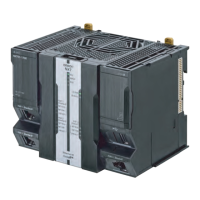1-1 Overview and Features
This section describes the overview and features of the DB Connection Service.
1-1-1 Overview
The SYSMAC NJ/NX-series Controllers are next-generation machine automation controllers that
provide the functionality and high-speed performance that are required for machine control. They
provide the safety, reliability, and maintainability that are required of industrial controllers.
The NJ/NX-series Controllers provide the functionality of previous OMRON PLCs, and they also
provide the functionality that is required for motion control. Synchronized control of I/O devices
on high-speed EtherCAT can be applied to safety devices, vision systems, motion equipment,
discrete I/O, and more.
OMRON offers the new Sysmac Series of control devices designed with unified communications
specifications and user interface specifications. The NJ/NX-series Machine Automation
Controllers are part of the Sysmac Series. You can use them together with EtherCAT slaves,
other Sysmac products, and the Sysmac Studio Automation Software to achieve optimum
functionality and ease of operation. With a system that is created from Sysmac products, you can
connect components and operate the system through unified concepts and usability.
The DB Connection Service is a function to insert, update, retrieve, and delete records to/from a
relational database (hereinafter called “DB”) on a server connected to the built-in EtherNet/IP
port of an NJ/NX-series CPU Unit by executing special instructions (called “DB Connection
Instruction”) on the NJ/NX-series CPU Unit.
The DB Connection Service is available with the NX-series NX701-@@20 CPU Unit and
NJ-series NJ501-@@20 and NJ101-@@20 CPU Units.
Oracle Database of Oracle Corporation, SQL Server of Microsoft Corporation, DB2 for Linux,
UNIX and Windows of IBM Corporation, MySQL of Oracle Corporation, Firebird of Firebird
Foundation Incorporated, and PostgreSQL of PostgreSQL Global Development Group are
supported.
*1
NJ501-@@20 and NX701-@@20 CPU Units can access up to three databases on up to three
servers.
*2
It is possible to access more than one database in one or more servers. You can
realize flexible operations such as switching the database to access according to the specified
data and SQL operations (such as INSERT/SELECT) and connecting to another database in a
different server when a database cannot be connected, for example, due to a server problem.
*1 The connectable databases are different between NJ501-1@20/NJ101-@@20 and
NJ501-4320. Refer to 1-2-1 DB Connection Service Specifications for the connectable
databases.
*2 An NJ101-@@20 can access only one database.

